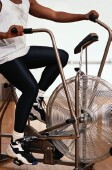
FRIDAY, July 30 (HealthDay News) — Patients with knee or hip osteoarthritis fare better if they continue to do their physical therapy exercises after completing a supervised exercise therapy at a medical facility, new research indicates.
The Dutch study also found that arthritis patients reported less pain, improved muscle strength and a better range of motion when they followed their provider’s recommendations for overall exercise (such as walking) and a physically active lifestyle — a choice that improved the long-range effectiveness of supervised therapy.
The findings, reported online and in the August print issue of Arthritis Care & Research, stem from work conducted by a team of researchers led by Martijn Pisters of the Netherlands Institute for Health Services Research and the University Medical Center Utrecht in the Netherlands.
The study authors noted in a news release from the journal’s publisher that the World Health Organization deems osteoarthritis (OA) to be one of the 10 most disabling conditions in the developed world. Four in five OA patients have movement limitations, the WHO estimates, while one-quarter cannot engage in the normal routines of daily living — an ordeal for which physical therapy is often the prescribed short-term remedy.
To assess how well patients do after supervised therapy, Pisters and his colleagues tracked 150 hip and/or knee OA patients for five years.
The team found that three months after supervised therapy, nearly 58 percent of the patients continued to follow their prescribed strength-building exercise routines, while about 54 percent stuck to recommended activity patterns.
The more moderate or intense physical activity the patient did, the more his or her pain decreased. In addition, the more physical activity, the more physical function and performance improved, the authors found.
In addition, the more the OA patients adhered to their self-directed therapy, the more positive they themselves felt about their condition and its prognosis, the study indicated.
“Better adherence to home exercises and being more physically active improves the long-term effectiveness of exercise therapy in patients with OA of the hip and/or knee,” Pisters said in the news release.
The problem, he and the other researchers found, is that adherence to home exercise routines tended to diminish with time, with just over 44 percent of patients doing the strength-building exercises 15 months out, and only 30 percent doing so 60 months out.
“Future research should focus on how exercise behavior can be stimulated and maintained in the long term to improve outcomes for patients with OA,” Pisters concluded.
More information
For more on osteoarthritis, visit the U.S. National Institute of Arthritis and Musculoskeletal and Skin Diseases.

